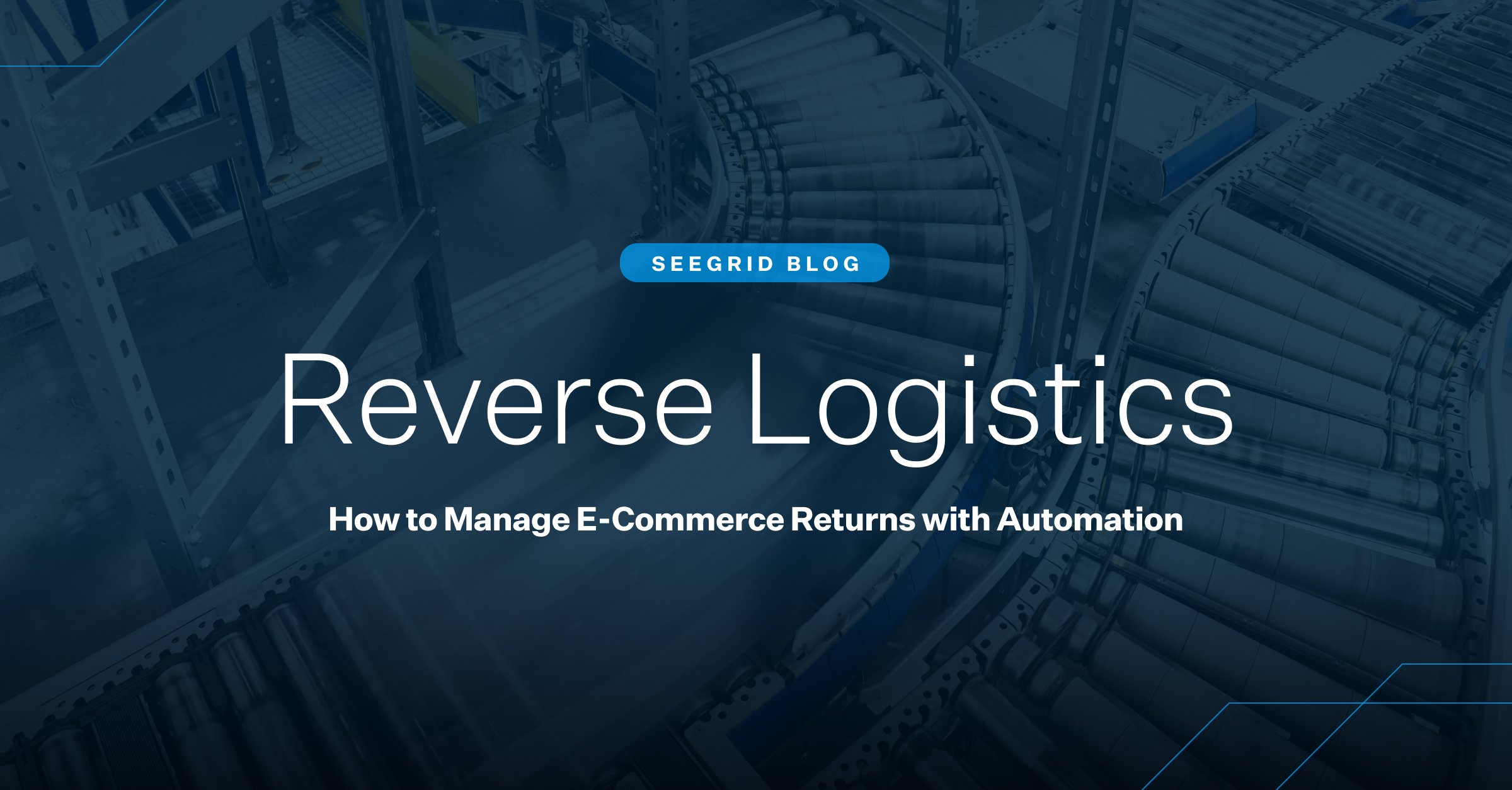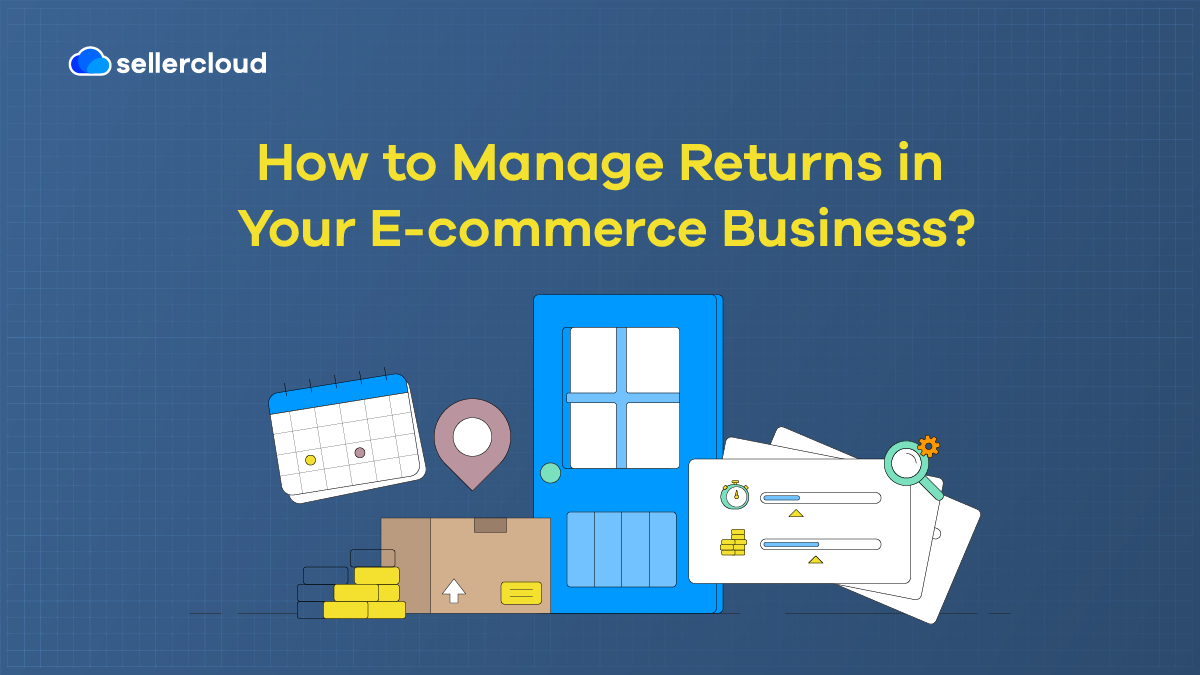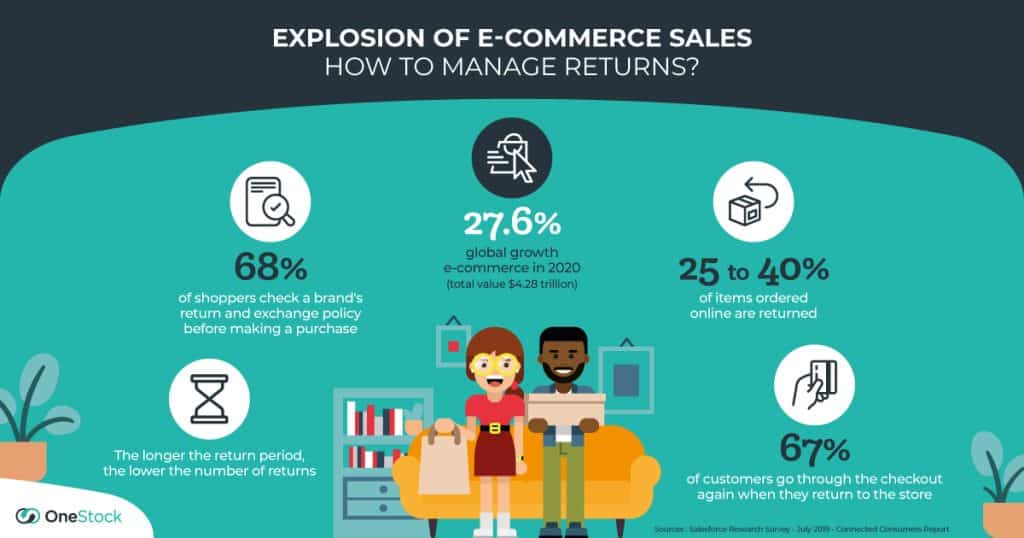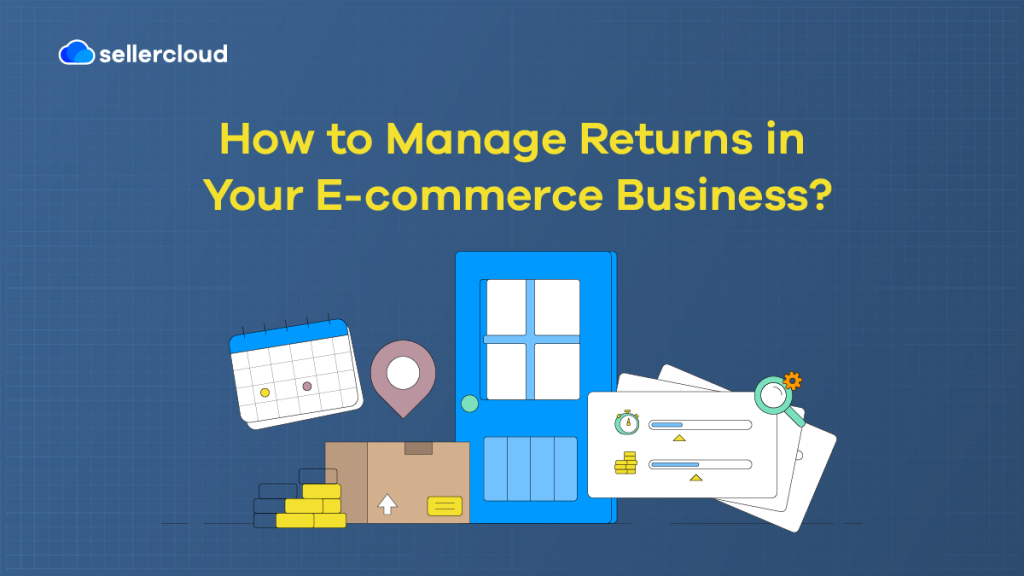Managing returns in e-commerce is crucial. A good returns process keeps customers happy and loyal.
Every online store faces returns. It is a part of doing business. But returns do not have to be a problem. They can be an opportunity. A smooth return process builds trust. It shows you care about your customers. This guide will help you manage returns.
Learn how to handle them efficiently. Discover tips to make the process easy. Your customers will appreciate it. Your business will grow. Let’s explore how to manage returns in e-commerce.
Importance Of Efficient Return Management
Efficient return management is crucial for any e-commerce business. It affects customer satisfaction and operational efficiency. An effective return process can build trust and retain customers. Poorly managed returns, on the other hand, can lead to lost customers and revenue.
Impact On Customer Loyalty
Customers value a hassle-free return process. Easy returns build trust and encourage repeat purchases. A smooth return process shows that the business values customer satisfaction. This can turn one-time buyers into loyal customers.
Effects On Revenue
Efficient return management can reduce losses. It helps quickly restock and resell returned items. A streamlined process reduces operational costs. This ultimately increases profit margins. Poor return management, however, can lead to higher costs and lost sales.

Credit: hub.seegrid.com
Creating A Clear Return Policy
Managing returns is a critical part of running an e-commerce business. A clear return policy not only helps in reducing customer disputes but also builds trust. A well-crafted return policy can enhance customer satisfaction and encourage repeat purchases. Let’s dive into the key elements and communication strategies for an effective return policy.
Key Elements To Include
When creating a return policy, there are several important elements to consider. These elements ensure that your policy is comprehensive and easy for customers to understand.
- Eligibility: Clearly state which items are eligible for return and which are not. For example, “Items must be returned within 30 days of delivery.”
- Condition: Specify the condition in which items must be returned. “Items must be unused, in their original packaging, and with all tags attached.”
- Procedure: Outline the steps customers need to follow to return an item. This could include contacting customer service, obtaining a return authorization, and using a specific shipping method.
- Refunds: Explain how and when refunds will be processed. “Refunds will be issued to the original payment method within 7-10 business days of receiving the return.”
- Shipping Costs: Clarify who is responsible for the return shipping costs. “Customers are responsible for return shipping costs unless the item is defective or incorrect.”
Communicating The Policy
Once you have a clear return policy, the next step is to communicate it effectively to your customers. A well-communicated policy can prevent misunderstandings and make the return process smoother for both parties.
- Website Placement: Place the return policy in an easily accessible location on your website. Common spots include the footer, FAQ section, and product pages.
- Email Confirmation: Include a link to the return policy in order confirmation emails. This ensures customers are aware of the policy right from the start.
- Customer Service: Train your customer service team to be familiar with the return policy. They should be able to answer any questions and guide customers through the return process.
- Clear Language: Use simple and clear language to explain the policy. Avoid jargon and complicated terms that might confuse customers.
Remember, a clear and well-communicated return policy not only protects your business but also enhances customer trust and satisfaction. So, take the time to craft a policy that is fair, transparent, and easy to understand.
Streamlining The Return Process
Managing returns in e-commerce can be challenging. A well-organized return process is essential. It improves customer satisfaction and reduces costs. Here, we will discuss how to streamline the return process.
Simplified Return Procedures
Simplify your return policy. Make it easy to understand. Use clear language. State the steps required. Customers should know what to expect. Provide a return form with each order. This makes it easier for customers to return items.
Offer multiple return options. Allow returns by mail and in-store. This flexibility increases customer satisfaction. Ensure your return process is fast. Quick returns lead to happy customers.
Utilizing Technology
Use technology to manage returns. Implement a return management system (RMS). An RMS tracks returns and provides valuable data. It helps you understand why items are returned. Use this information to improve your products and services.
Offer online return processing. Customers can initiate returns through your website. This saves time for both parties. Use automated emails. Keep customers informed about the return status.
Integrate your RMS with inventory management. This ensures accurate stock levels. It also speeds up the restocking process. Technology makes the return process efficient and user-friendly.
Handling Refunds And Exchanges
Handling returns in e-commerce can be tricky. Customers expect a smooth and hassle-free process when they want to return an item. Managing refunds and exchanges efficiently is crucial to maintain customer satisfaction and loyalty. Let’s dive into some effective strategies for handling refunds and exchanges in your online store.
Refund Methods
When it comes to refund methods, it’s essential to offer multiple options to cater to different customer preferences. Here are some common refund methods you can implement:
- Original Payment Method: This is the most straightforward option. Refund the amount to the same payment method used during the purchase. It’s simple and familiar to customers.
- Store Credit: Offering store credit can be a win-win situation. Customers get their refund, and you retain the revenue within your store. It also encourages future purchases.
- Gift Cards: Similar to store credit, issuing a gift card can be a great alternative. It provides flexibility to customers while keeping the funds in your business.
Consider creating a clear and concise refund policy. Make sure it’s easily accessible on your website. This transparency builds trust and reassures customers about their purchase decisions.
Exchange Options
Not every customer wants a refund. Some might prefer to exchange their item for a different size, color, or product. Here are some effective exchange options to consider:
- Direct Exchange: Allow customers to exchange an item directly for another. Ensure the process is simple, with clear instructions on how to initiate an exchange.
- Cross-Product Exchange: Offer the flexibility to exchange for a different product. This can be particularly useful if the original item is out of stock.
- Partial Exchanges: Sometimes, customers might want to exchange part of their order. Facilitate partial exchanges to accommodate their needs.
To manage exchanges effectively, ensure your inventory system is up-to-date. This prevents issues like stock shortages or delays in processing the new order. Also, consider offering free return shipping for exchanges to enhance the customer experience.
Managing refunds and exchanges might seem daunting, but with these tips, you can create a seamless process that keeps your customers happy and coming back for more. Remember, a positive return experience can turn a dissatisfied customer into a loyal one!
Dealing With Fraudulent Returns
Dealing with fraudulent returns is a crucial aspect of managing an e-commerce business. Fraudulent returns can result in significant financial losses. They can also disrupt inventory management. Understanding how to identify and prevent these returns can save businesses time and money.
Identifying Red Flags
Knowing the signs of fraudulent returns helps you catch them early. Look out for customers who frequently return items. Frequent returns might indicate fraud. Check for high-value items being returned often. This is another red flag.
Review customer return reasons. Watch for vague or repeated excuses. These can signal fraud attempts. Pay attention to the condition of returned items. Damaged or different items are suspicious. Monitor return patterns. Similar return patterns may indicate fraud.
Preventive Measures
Set clear return policies. Make them easy to understand. Clear policies deter fraud. Require proof of purchase for returns. This limits fraudulent activities. Use return shipping labels. It helps track returned items. This ensures the correct item is returned.
Implement restocking fees. Fees discourage unnecessary returns. Limit the return window. Shorter return periods reduce fraud chances. Inspect returned items carefully. Verify if they match the original purchase. Educate your team. Training helps them spot fraud.
Use technology to your advantage. Software can track return patterns. It helps identify suspicious activities. Regularly review your return policies. Ensure they stay effective and up-to-date.
Leveraging Data For Improvement
Leveraging data can significantly improve how you manage returns in e-commerce. Data helps you understand patterns and make informed decisions. By analyzing return data, you can identify common issues. This can lead to better strategies and fewer returns. Let’s dive into how you can leverage data for improvement.
Analyzing Return Patterns
Start by collecting detailed return data. Look at the reasons customers give for returns. Track return rates by product, category, and season. Identify patterns in the data. Are certain products returned more often? Is there a common reason for returns? This analysis can highlight problem areas.
Making Data-driven Decisions
Use the insights from your analysis to make decisions. If a product has a high return rate, investigate further. Check if there is a quality issue or if the product description is unclear. Improve your product listings based on customer feedback. Make sure the product images are accurate. Provide clear size guides if you sell clothing.
Adjust your inventory based on return data. If a product is frequently returned, consider stocking less of it. Focus on products with low return rates. This can reduce return-related costs and improve customer satisfaction. Data-driven decisions can lead to better product offerings and happier customers.
Enhancing Customer Experience
Managing returns in e-commerce goes beyond processing refunds. It’s about enhancing the customer experience. A seamless return process builds trust and loyalty. Customers feel valued and confident in their purchases. This section focuses on how to improve the customer experience during returns.
Providing Excellent Support
Support is critical in the returns process. Offer multiple channels for customer support. Phone, email, and live chat are effective. Quick responses show you care. Train your staff to handle returns with empathy. They should be knowledgeable about your return policy. Clear communication reduces confusion and frustration.
Personalizing The Return Journey
Personalizing the return journey can make a big difference. Use the customer’s name in communications. Offer tailored solutions based on their purchase history. This makes the process feel unique and special. Provide updates during the return process. Inform them when the return is received and processed. This transparency builds trust.
Consider following up after the return is complete. Ask for feedback on their experience. This shows you value their opinion. It also helps you improve your return process. A personalized approach can turn a return into a positive experience. It can even lead to repeat business.

Credit: sellercloud.com
Sustainable Return Practices
As e-commerce continues to grow, managing returns sustainably becomes essential. Sustainable return practices help reduce waste and improve customer satisfaction. This approach benefits both businesses and the planet. Let’s explore some effective methods for sustainable return practices.
Eco-friendly Packaging
Using eco-friendly packaging is a key step in sustainable returns. Choose materials that are recyclable or biodegradable. Avoid excessive packaging and opt for minimalistic designs. This reduces waste and appeals to environmentally-conscious customers.
Consider reusable packaging options. Some companies offer returnable packaging that can be used multiple times. This practice cuts down on single-use plastics and cardboard. It also creates a positive brand image.
Reducing Return Rates
Reducing return rates is crucial for sustainability. Clear product descriptions and images help customers make informed choices. This leads to fewer returns due to unmet expectations.
Offer size guides and fit recommendations. These tools assist customers in selecting the right size or product. When customers receive what they expect, returns decrease.
Implement a customer feedback loop. Gathering feedback helps identify common issues. Address these problems to prevent future returns. This improves the overall shopping experience.
Provide excellent customer support. Prompt responses and helpful advice can resolve issues before they lead to returns. Happy customers are less likely to return products.

Credit: www.onestock-retail.com
Frequently Asked Questions
How To Handle Returns In Ecommerce?
Handle eCommerce returns by creating a clear return policy. Offer easy return methods and provide prompt refunds. Communicate with customers throughout the process. Use return data to improve products and services.
What Happens To E-commerce Returns?
E-commerce returns undergo inspection for damage. Items in good condition get restocked or resold. Damaged products may be refurbished, donated, or recycled.
How To Reduce Return Rate In Ecommerce?
Improve product descriptions and images. Offer detailed size guides. Provide excellent customer service. Implement a clear return policy. Encourage customer reviews.
How Do You Manage Product Returns?
We manage product returns through a simple, hassle-free process. Contact customer service within 30 days of purchase. Follow provided instructions to return the item. We process refunds or exchanges promptly. Ensure items are in original condition.
Conclusion
Effective return management boosts customer trust and loyalty. Clear return policies reduce confusion. Easy return processes enhance customer experience. Always communicate promptly with your customers. Track returns to identify common issues. Offer multiple return options for convenience. Train your staff to handle returns efficiently.
Use customer feedback to improve. Make returns a seamless part of your service. This will lead to happier customers and repeat business. Manage returns well to thrive in e-commerce.

